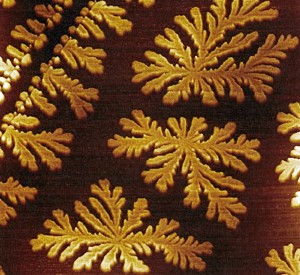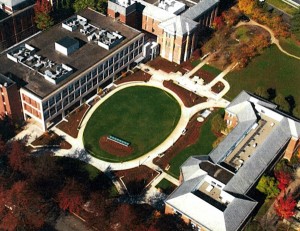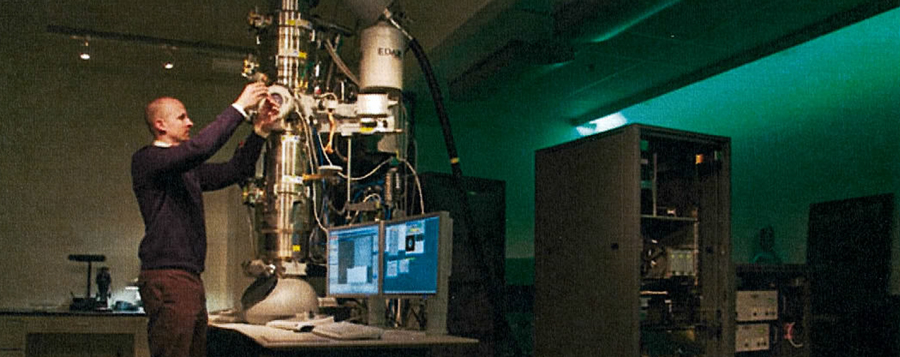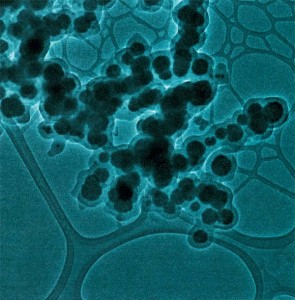What is Materials Science?
Materials science is the investigation of new materials and devices with the potential for scientific and technological applications. The advent of nanotechnology has created a new era for materials science, allowing scientists to observe and manipulate matter in ways that promise breakthroughs in virtually every industry. MSI scientists are committed to sustainability and human health and safety as guiding principles for this research.
The Materials Science Institute — Fast Facts
Founded in 1985 as a State Center of Excellence, the purpose of the Materials Science Institute is to study the structure and properties of materials, provide education in the sciences of materials and serve Oregon as a resource in these sciences.
Since 1985 the MSI has:
- Grown tenfold in the size of its research program
- Developed four new graduate programs in materials
- Contributed to the State’s prosperity through collaboration with more than 25 Oregon companies
- Created a unique Graduate Internship Program, which has achieved a 98% placement rate for over 300 students in paid internships and a greater than 90% conversion of internships to permanent positions over the past 14 years.
- Collaborated with school districts and educational service districts in creating a unique outreach program that brings graduate students into classrooms, teaching teachers how to use inquiry based science to meet state education benchmarks while being role models for students.
- Partnered with Oregon community colleges in developing a summer research program that places talented community college students in MSI laboratories.
Resources:
- 35 affiliated UO faculty (15 from physics; 20 from chemistry)
- 106 Ph.D. students
- $18.5M research funding
- > $25 million in advanced research equipment
Transforming the MSI Mission into Reality.
 To accomplish its goals in research, education and commercialization, the MSI plays a central role in the development of shared equipment facilities at the UO (including the LISB/Lokey Laboratories, CAMCOR and SunRISE), research networks (including ONAMI and Oregon BEST), a graduate internship program, and outreach and educational missions (including REU, SPICE, SAIL, SOS). New missions include an Interdisciplinary Applied Sciences (IAS) program and the Professors of Practice scheme.
To accomplish its goals in research, education and commercialization, the MSI plays a central role in the development of shared equipment facilities at the UO (including the LISB/Lokey Laboratories, CAMCOR and SunRISE), research networks (including ONAMI and Oregon BEST), a graduate internship program, and outreach and educational missions (including REU, SPICE, SAIL, SOS). New missions include an Interdisciplinary Applied Sciences (IAS) program and the Professors of Practice scheme.
The Nano Advantage
 At the UO, faculty and industry partners use advanced technology that makes it possible to study and develop new materials on the nanoscale (a nanometer is a billionth of a meter, 50,000 times smaller than the width of a human hair). Materials science students gain hands-on experience developing new nanomaterials, exploring green approaches to manufacturing and examining the benefits and implications of new products – from alternative energy solutions to medical implants and diagnostics.
At the UO, faculty and industry partners use advanced technology that makes it possible to study and develop new materials on the nanoscale (a nanometer is a billionth of a meter, 50,000 times smaller than the width of a human hair). Materials science students gain hands-on experience developing new nanomaterials, exploring green approaches to manufacturing and examining the benefits and implications of new products – from alternative energy solutions to medical implants and diagnostics.
Pictured: An image of “nanoflowers,” which are used as a basic component of nanoelectronic circuits. Besides their scientific significance, they represent one of the key strengths of the MSI: international collaboration. Nanoflowers are studied in a collaboration between the MSJ and the MacDiarmid institute in New Zealand.
The Lorry I. Lokey Laboratories
 Installed below a grassy circle next to Huestis Hall is some of the most advanced scientific technology in the state of Oregon – making the UO a hub for materials science innovation in the Northwest and the United States.
Installed below a grassy circle next to Huestis Hall is some of the most advanced scientific technology in the state of Oregon – making the UO a hub for materials science innovation in the Northwest and the United States.
The Lorry I. Lokey Laboratories are embedded in a hollowed-out vault of bedrock, 17 feet below street level. The bedrock shelters the lab’s highperformance equipment from vibration, which creates a unique environment to produce and manipulate nano materials. The uniquely stable environment gives UO researchers a competitive advantage. The Lorry I. Lokey Laboratories is associated with the Oregon Nanoscience and Microtechnologies Institute (ONAMI), a cooperative venture between government and world-class nanoscience andmicrotechnology industries in the Northwest.
ONAMI was created to cultivate research and commercialization to advance the technology based economic sector in Oregon, and expand the benefits of technology innovation to traditional and natural resource industries. Participants include the University of Oregon, Oregon Health & Science University (OHSU), Oregon State University (OSU), Portland State University (PSU), Pacific Northwest National Laboratories (PNNL) and the region’s high-technology companies.
The MSI plays a central role in ONAMI’s four thrust research areas. Each of these thrusts represents the collaboration of local, national and international industry, academic and government agency partners seeking to bring groundbreaking research to commercial reality.
- N3 -the Nanoelectronics, Nanobiotechnology and Nanometrology Initiative
- SNNI- the Safer Nanomaterials and Nanomanufacturing Initiative
- Microtechnology-based Energy and Chemical Systems
- Green Materials Chemistry
Center For Sustainable Materials Chemistry
 The CSMC is a UO-OSU partnership and is the only Center for Chemical Innovation approved by the NSF for ‘phase 2’ funding in 2011. The phase 2 award is for $20M over 5 years. The result of a decade of work by MSI members to create and develop education, outreach and industrial partnership programs, the CSMC is the first NSF center where the UO is a major partner in the last 25 years.
The CSMC is a UO-OSU partnership and is the only Center for Chemical Innovation approved by the NSF for ‘phase 2’ funding in 2011. The phase 2 award is for $20M over 5 years. The result of a decade of work by MSI members to create and develop education, outreach and industrial partnership programs, the CSMC is the first NSF center where the UO is a major partner in the last 25 years.
Signature Research Center Shared Facilities (located in the Lorry I. Lokey Laboratories)
Private businesses are able to conduct materials research at the UO via Oregon’s “high-tech extension service.” This means that Oregon businesses are able to use some of the brightest minds and best facilities available in the world without having to build and staff their own laboratories. At the same time, students are learning real-world applications.

Facilities include:
- CAMCOR – The MSI has developed a full-service, comprehensive materials characterization center that provides equipment for microanalysis, surface analysis, electron microscopy, and semiconductor device fabrication, as well as traditional chemical characterization. Staff are expertly trained and highly experienced in sample preparation, data collection and data analysis.
- SuNRISE – The MSI has developed a service that is building a comprehensive suite of tools for the characterization of solar cells and solar cell materials. In the summer of 2012, the lab expanded into a new facility in the Lewis Integrative Science Building. SuNRISE is facility of Oregon BEST (Oregon Built Environment & Sustainable Technologies Center), an independent, nonprofit established by the Oregon legislature that builds on the state’s reputation as a national innovator in sustainability, natural resources, and renewable energy.)
Innovation Partnership Services – Technology Transfer
Oregon is one of the five most inventive states! The MSI works closely with the office of Innovation Partnership Services, partnering with UO innovators, the public, and industry to accelerate the adoption of innovations derived from UO research and education.



